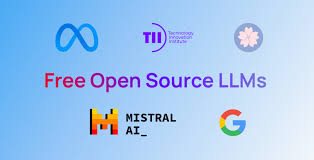Open-Source LLMs for Electrical and Computer Engineering: IoT, Embedded Systems, and Hardware-Software Codesign
This white paper explores the potential of open-source Large Language Models (LLMs) in the domain of Electrical and Computer Engineering, focusing on Internet of Things (IoT), embedded systems, and hardware-software codesign.
1. Introduction
LLMs have demonstrated remarkable capabilities in natural language processing, code generation, and various other domains. Their application in engineering, particularly in resource-constrained environments like IoT and embedded systems, presents unique challenges and opportunities. This paper investigates the potential of open-source LLMs to address these challenges and accelerate innovation in these fields.
2. Open-Source LLMs: A Landscape
- Hugging Face Transformers: A popular library providing access to a wide range of pre-trained transformer models, including many open-source LLMs.
- Examples: BERT, GPT-2, GPT-Neo, BART, DistilBERT
- EleutherAI: A research organization dedicated to developing and releasing open-source AI models.
- Examples: GPT-NeoX, GPT-J, GPT-Neo
- Meta AI: Releases open-source models like OPT and Llama.
- Stability AI: Known for Stable Diffusion (image generation) and also releases some language models.
3. Applications in IoT, Embedded Systems, and Hardware-Software Codesign
- IoT:
- Intelligent Edge Devices: LLMs can enable on-device intelligence for real-time decision-making, anomaly detection, and predictive maintenance in IoT devices.
- Resource-Constrained Inference: Techniques like quantization, pruning, and knowledge distillation can be used to adapt large models to run efficiently on resource-limited IoT devices.
- Natural Language Interfaces: LLMs can be used to create intuitive and user-friendly natural language interfaces for IoT devices and systems.
- Embedded Systems:
- Automated Code Generation: LLMs can assist in generating efficient and reliable code for embedded systems, reducing development time and improving code quality.
- Hardware Description Language (HDL) Generation: LLMs can be used to generate HDL code (e.g., Verilog, VHDL) for FPGAs and ASICs, accelerating the hardware design process.
- Debugging and Testing: LLMs can help identify and debug code issues, generate test cases, and improve the overall reliability of embedded systems.
- Hardware-Software Codesign:
- Exploration of Design Space: LLMs can assist in exploring the vast design space of hardware-software systems, suggesting optimal configurations and trade-offs.
- Automated Synthesis: LLMs can be used to automate the synthesis of hardware and software components, streamlining the design process.
- Performance Prediction: LLMs can be trained to accurately predict the performance of different hardware-software implementations.
4. Use Cases
- Smart Home:
- Personalized Energy Management: LLMs can analyze user behavior and optimize energy consumption in smart homes.
- Proactive Maintenance: LLMs can predict and prevent equipment failures in smart home appliances.
- Industrial IoT:
- Predictive Maintenance: LLMs can analyze sensor data from industrial equipment to predict maintenance needs and prevent costly downtime.
- Quality Control: LLMs can be used to detect defects and anomalies in manufacturing processes.
- Autonomous Systems:
- Real-time Decision Making: LLMs can enable real-time decision-making in autonomous vehicles, drones, and robots.
- Environment Perception: LLMs can be used to process sensor data and understand the environment surrounding autonomous systems.
- Healthcare:
- Remote Patient Monitoring: LLMs can analyze patient data from wearable devices and provide personalized health insights.
- Drug Discovery: LLMs can accelerate drug discovery by analyzing vast amounts of biomedical data.
5. Challenges and Considerations
- Resource Constraints: Running large LLMs on resource-constrained devices requires careful optimization and model compression techniques.
- Real-time Performance: Ensuring real-time performance is crucial for many IoT and embedded systems applications.
- Privacy and Security: Protecting user data and ensuring the security of LLM-powered systems is paramount.
- Explainability and Interpretability: Understanding the decision-making process of LLMs is essential for building trust and ensuring safety.
6. Conclusion
Open-source LLMs have the potential to revolutionize the fields of IoT, embedded systems, and hardware-software codesign. By leveraging their capabilities in areas such as code generation, decision-making, and optimization, engineers can develop more intelligent, efficient, and reliable systems.
7. References
- Books:
- "Hands-On Machine Learning with Scikit-Learn, Keras & TensorFlow" by Aurélien Géron
- "Deep Learning" by Ian Goodfellow, Yoshua Bengio, and Aaron Courville
- Papers:
- "Attention Is All You Need" by Ashish Vaswani et al. (2017)
- "BERT: Pre-training of Deep Bidirectional Transformers for Language Understanding" by Jacob Devlin et al. (2018)
- "GPT-3: Language Models are Few-Shot Learners" by Tom B. Brown et al. (2020)
- Websites:
- Hugging Face: https://www.eleuther.ai/
- Meta AI: https://stability.ai/
Note: This is a preliminary overview. Further research and experimentation are necessary to fully explore the potential of open-source LLMs in these domains.
This white paper provides a starting point for understanding the potential of open-source LLMs in Electrical and Computer Engineering. It is crucial to continue exploring and addressing the challenges associated with their implementation in resource-constrained environments.
Disclaimer: This information is for general knowledge and informational purposes only. It does not constitute professional advice.
I hope this comprehensive white paper provides a valuable overview of open-source LLMs for your research and development efforts.



